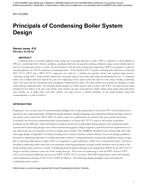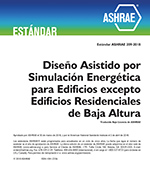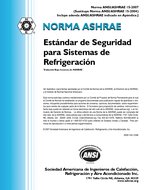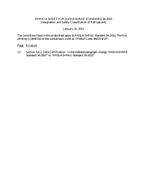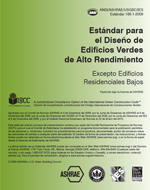Description
Condensing boilers can provide significant energy savings due to operating efficiencies as high as 98% as compared to a peak efficiency of 80% for a conventional boiler. However, specifying a condensing boiler does not guarantee achieving anticipated savings; careful attention must be paid to the heating water system as a whole. The first principal is that low boiler entering water temperatures (EWT) are required to realize the advertised efficiency and AFUE performance of condensing boilers. ANSI Standard Z21.13 specifies condensing boiler performance testing with 80°F (27°C) EWT and a 100°F (55°C) temperature rise (delta-T), a condition not generally achieved with standard design practices. Advantages of high delta-T systems include reduced boiler and pump energy use and reduced pipe sizing and distribution heat loss. A condensing boiler is not a compact fluorescent lamp (CFL); you can’t simply plug it into a typical system and expect it to save energy. Selecting a condensing boiler is the easiest and least consequential part of designing a condensing boiler system. This paper provides basic principles for designing a heating system utilizing condensing boilers. The remaining design principals are mostly related to how to achieve a low EWT. The paper presents design principles for heat delivery to the space, coil selection, boiler selection, low mass versus high mass boilers, piping system design, pump and control valve selection, use of buffer tanks, and boiler controls. The paper presents a detailed description of each design principal along with recommendations as to how to achieve it.
Citation: ASHRAE Papers CD: 2014 ASHRAE Winter Conference, New York, NY
Product Details
- Published:
- 2014
- Number of Pages:
- 8
- File Size:
- 1 file , 1.7 MB
- Product Code(s):
- D-NY-14-C003
